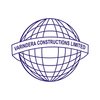Filter interviews by
Varindera Constructions Senior Safety Officer Interview Questions and Answers
Varindera Constructions Senior Safety Officer Interview Experiences
1 interview found
(2 Questions)
- Q1. What is AFR kindly explain AFR Formula
- Ans.
AFR stands for Accident Frequency Rate, a measure used to calculate the frequency of accidents in a workplace.
AFR is calculated by dividing the total number of accidents by the total number of hours worked, multiplied by 1,000,000.
It helps in determining the safety performance of a workplace and identifying areas for improvement.
For example, if a company had 10 accidents in a year and employees worked a total of 100,00...
- Q2. How to calculate SWL
- Ans.
SWL (Safe Working Load) can be calculated by dividing the breaking strength of a material by a safety factor.
SWL = Breaking Strength / Safety Factor
Breaking Strength is the maximum load a material can withstand before failure
Safety Factor is a multiplier applied to the breaking strength to ensure safety
Example: If a rope has a breaking strength of 10,000 lbs and a safety factor of 5, SWL = 10,000 / 5 = 2,000 lbs
Top trending discussions






Interview questions from similar companies

Interview Questionnaire
1 Question
- Q1. Technical question

I applied via Company Website and was interviewed in Mar 2021. There was 1 interview round.
Interview Questionnaire
1 Question
- Q1. All question based on past work experiences.
Interview Preparation Tips

I applied via Recruitment Consultant and was interviewed before Oct 2020. There was 1 interview round.
Interview Questionnaire
1 Question
- Q1. About the background
Interview Preparation Tips

Senior Engineer Interview Questions & Answers
Ahluwalia Contracts Indiaposted on 13 Aug 2021
I applied via Naukri.com and was interviewed before Aug 2020. There were 4 interview rounds.
Interview Questionnaire
1 Question
- Q1. How to start a new project ?
Interview Preparation Tips

I applied via Recruitment Consultant and was interviewed in Sep 2019. There were 3 interview rounds.
Interview Questionnaire
2 Questions
- Q1. About my previous experience, and my scope of work?
- Q2. Areas of strengths and areas need to develop
Interview Preparation Tips
Thanks and Regards
Rahman

I applied via Campus Placement and was interviewed before Mar 2020. There were 4 interview rounds.
Interview Questionnaire
1 Question
- Q1. What is the most challenging situation you have been through in your career?
Interview Preparation Tips

Interview Questionnaire
3 Questions
- Q1. How many time u take any update shuttering system?
- Ans.
The question is unclear and lacks context.
Please provide more information about the 'update shuttering system'.
Specify the time frame for the updates.
Clarify the purpose or objective of the updates.
Provide any relevant examples or scenarios.
- Q2. Why u want to work as a execution engineer? Why not any special team such as formwork team,or quality team?
- Ans.
I want to work as an execution engineer because I enjoy the challenge of overseeing and coordinating all aspects of a project.
As an execution engineer, I would have the opportunity to work on a variety of projects and oversee all aspects of their execution.
I enjoy the challenge of coordinating different teams and ensuring that everything runs smoothly.
While working on a formwork or quality team would be valuable experi...
- Q3. As contractor farm Engineer in RCC which is most important? 1) Reinforcements 2)Formwork 3)Concrete And why?
- Ans.
Concrete is the most important as it provides the strength and durability to the structure.
Concrete is the backbone of any RCC structure.
It provides the strength and durability to the structure.
Reinforcements and formwork are important too, but without concrete, they are useless.
Proper mix design and curing of concrete are crucial for the longevity of the structure.

I applied via Company Website and was interviewed before Apr 2020. There were 4 interview rounds.
Interview Questionnaire
2 Questions
- Q1. Load distribution under rigid and flexible footings,water tank design, steel foundation design
- Q2. Mix design of concrete, btech project
- Ans.
Mix design of concrete and BTech project
Mix design involves determining the proportions of cement, water, aggregates, and admixtures to achieve desired properties of concrete
Factors like strength, workability, durability, and cost are considered while designing the mix
BTech project can involve studying the effect of different mix designs on properties of concrete or developing a new mix design
Examples of BTech projects...
Interview Preparation Tips


(2 Questions)
- Q1. Billing codes to be followed
- Ans.
Billing codes are determined by the organization and industry standards.
Billing codes are used to identify specific products or services provided by an organization.
The codes are typically determined by the organization and may also follow industry standards.
Examples of billing codes include CPT codes for medical procedures and UPC codes for retail products.
- Q2. IS 1200, it is in different part.
Varindera Constructions Interview FAQs
Tell us how to improve this page.
Varindera Constructions Interviews By Designations
- Varindera Constructions Senior Engineer Interview Questions
- Varindera Constructions Safety Officer Interview Questions
- Varindera Constructions Deputy Project Manager Interview Questions
- Varindera Constructions Assistant General Manager Interview Questions
- Varindera Constructions Senior Safety Officer Interview Questions
- Varindera Constructions Assistant Manager - QA & QC Interview Questions
- Varindera Constructions Site Engineer Interview Questions
- Varindera Constructions Deputy Manager Procurement Interview Questions
- Show more
Interview Questions for Popular Designations
- Safety Engineer Interview Questions
- Safety Manager Interview Questions
- Safety Officer Interview Questions
- Senior Safety Engineer Interview Questions
- Fire & Safety Officer Interview Questions
- Safety Supervisor Interview Questions
- Fire & Safety Supervisor Interview Questions
- Senior Safety Supervisor Interview Questions
- Show more
Varindera Constructions Senior Safety Officer Interview Process
based on 1 interview
Interview experience
Interview Questions from Similar Companies
Varindera Constructions Senior Safety Officer Reviews and Ratings
based on 2 reviews
Rating in categories
|
Civil Foreman
26
salaries
| ₹3.3 L/yr - ₹6 L/yr |
|
Store Incharge
24
salaries
| ₹3 L/yr - ₹9.6 L/yr |
|
Senior Engineer
22
salaries
| ₹4.9 L/yr - ₹8.5 L/yr |
|
Civil Site Engineer
20
salaries
| ₹1.9 L/yr - ₹5.4 L/yr |
|
Safety Officer
16
salaries
| ₹3.6 L/yr - ₹5.3 L/yr |

L&T Construction

Simplex Infrastructures

ITD Cementation India

Ashoka Buildcon
- Home >
- Interviews >
- Varindera Constructions Interview Questions >
- Varindera Constructions Senior Safety Officer Interview Questions











